A long living room can be a design challenge, but with the right strategies, it can become a versatile and inviting space. Thoughtful arrangements and creative design elements can transform a lengthy layout into a balanced, stylish retreat. From smart furniture placement to clever use of lighting, these 20 wonderful long living room ideas offer practical solutions to make your room feel cohesive and dynamic. By embracing zoning techniques and decor tricks, you can turn a stretched-out space into a room that feels both comfortable and visually appealing.

1. Use Area Rugs to Define Spaces
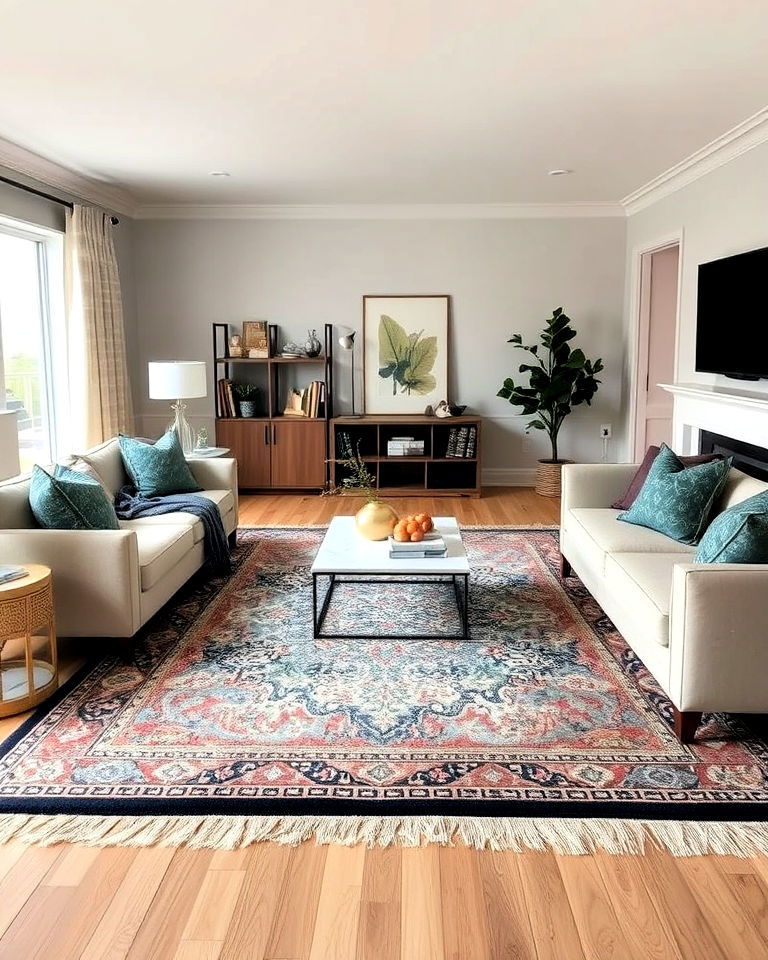
Area rugs can help divide a long living room into distinct areas, such as a seating zone and a reading nook. By choosing different but complementary rugs, you create visual separation while maintaining flow, which can be further enhanced by incorporating living room wall decor ideas. This technique helps break up the space and adds warmth and texture underfoot. Opt for rugs that align with your color scheme to keep a cohesive look, ensuring that each section feels purposeful yet connected.
2. Place Furniture in Groupings
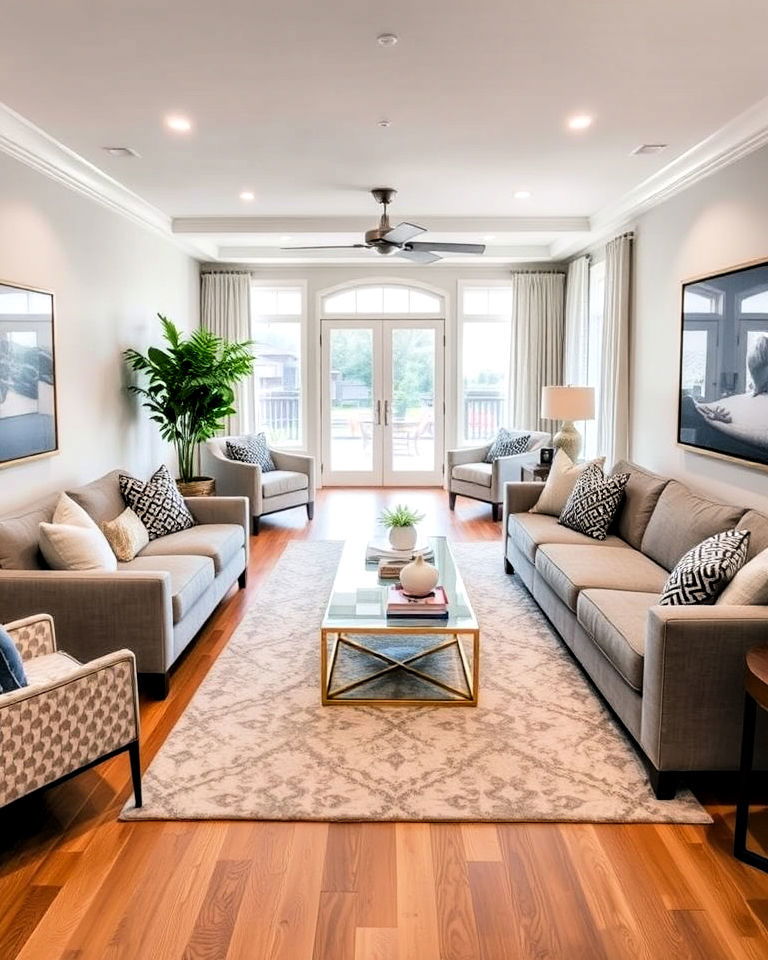
Strategically arranging furniture into groupings can make a long living room feel more balanced and cozy, and cozy living room ideas can provide further inspiration. Create separate conversation areas with sofas, chairs, and coffee tables instead of lining everything against the walls. This approach encourages intimacy in a larger space and allows for easy movement through the room. Arranging seating in clusters ensures that the space feels inviting and functional rather than like a hallway.
3. Create a Walkway with Furniture Placement
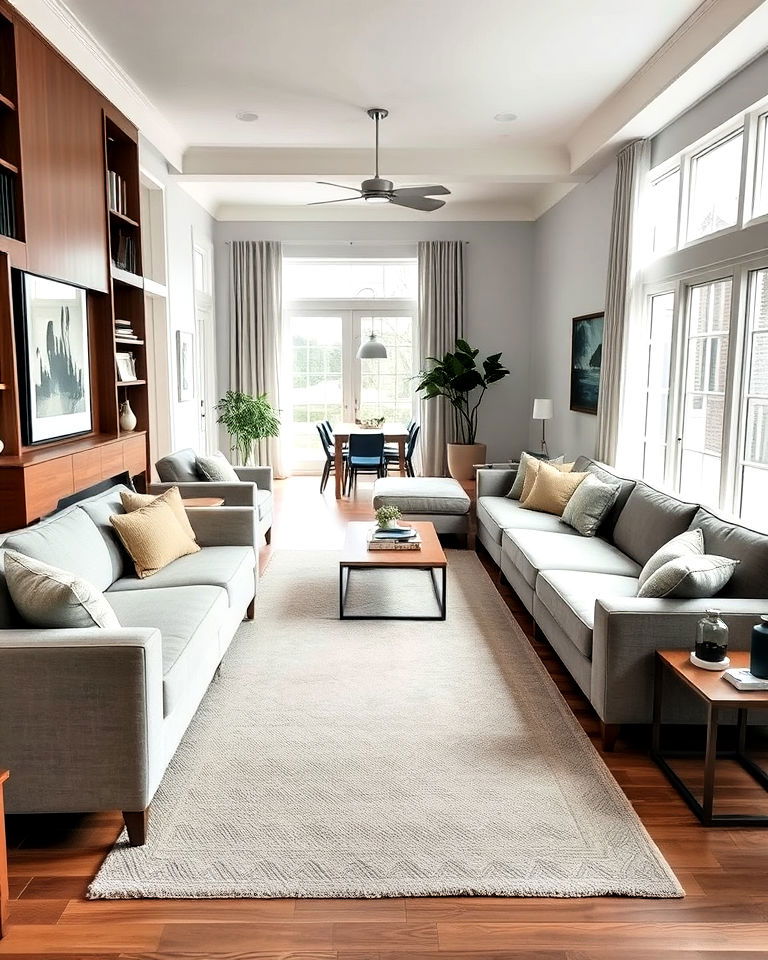
Maximize your space with smart long living room ideas for a balanced, inviting look. In a long living room, arranging furniture to create a natural walkway can make the space feel more organized. Position larger pieces like sofas and chairs to one side, leaving a clear path on the opposite side for easy navigation. This setup helps guide the flow of movement through the room without disrupting the seating areas. It's particularly useful in homes where the living room serves as a passage between other areas.
4. Divide with Bookshelves
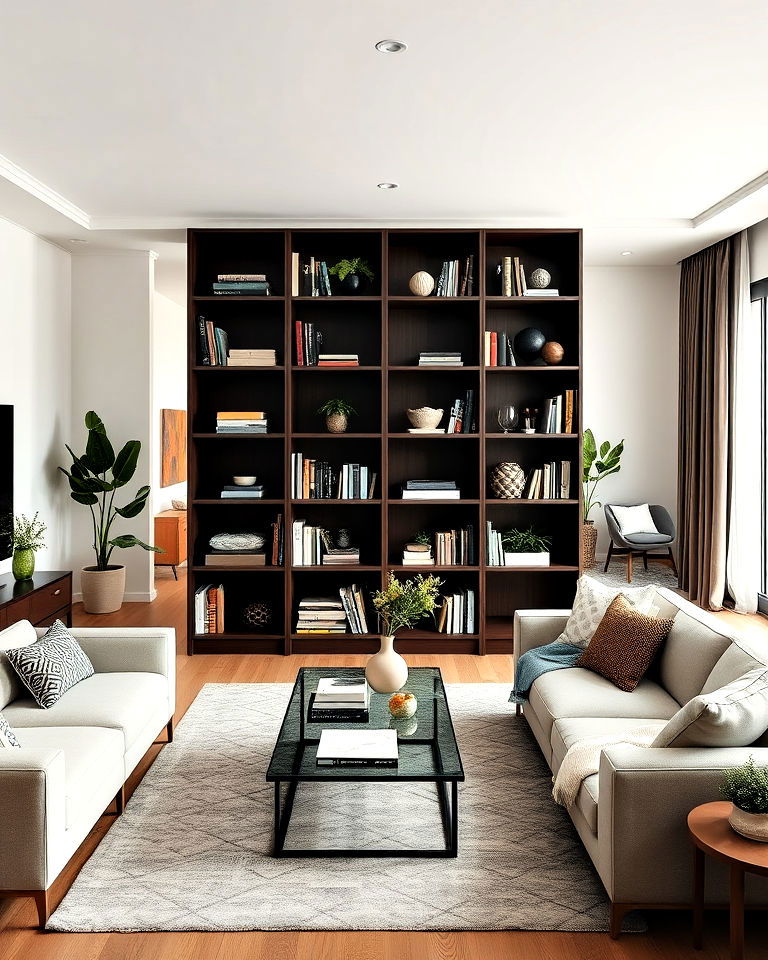
Bookshelves can serve as functional dividers in a long living room, creating distinct zones without blocking light or making the space feel closed off, and a living room bookshelf can also enhance the overall design. Use open-back shelves for a lighter look that maintains visual connection between areas. A bookshelf filled with decor items or greenery can add personality and interest while subtly dividing the room into a lounge area and a more private space.
5. Use a Daybed to Maximize Space
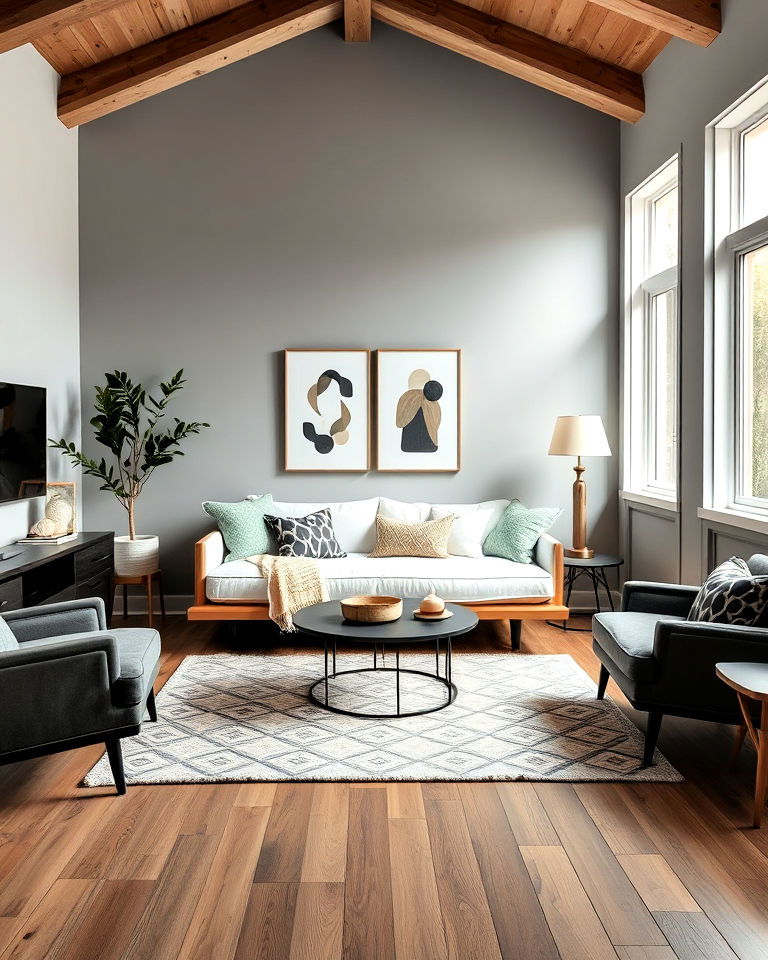
A daybed can be a versatile seating option for long living rooms, serving as a stylish centerpiece that doesn't block views. Place it in the middle of the room to divide a sitting area from a workspace or play area. Its low profile keeps the space feeling open while providing an extra lounging spot. This approach is great for homes that need flexibility in how the living room is used.
6. Paint with Different Shades to Create Zones
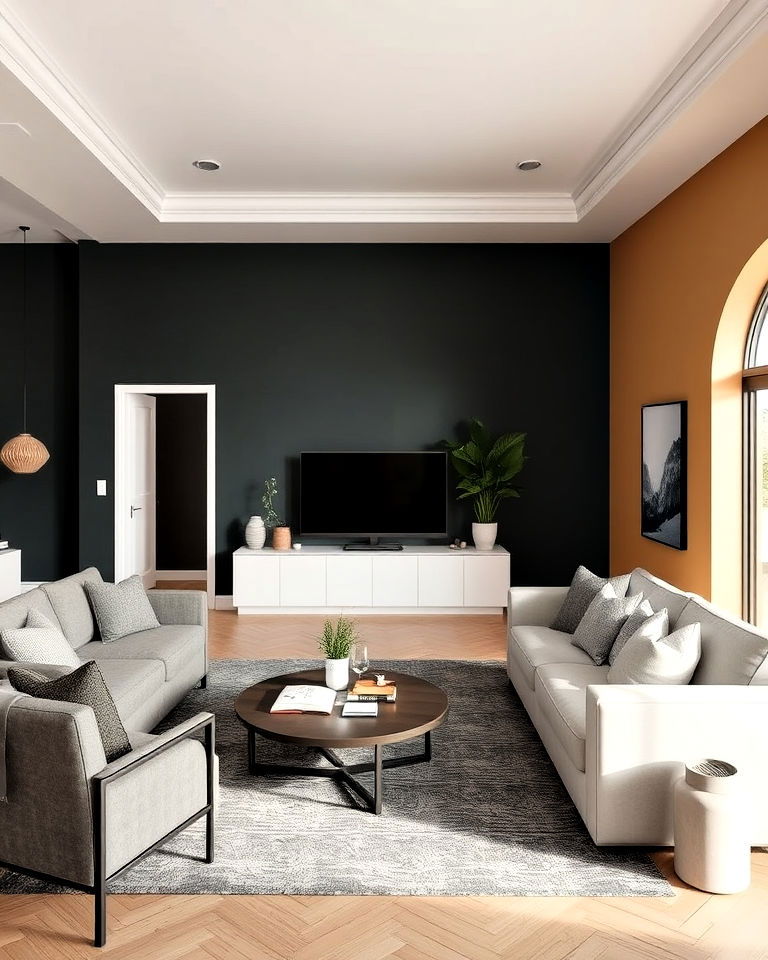
Using different shades of paint on the walls can help define separate zones in a long living room, and living room accent wall ideas can inspire creative applications. Paint one end a slightly darker shade or create an accent wall to draw attention to a specific area, such as a reading nook or entertainment space. This method adds visual depth and makes each part of the room feel distinct yet harmonious. It's an effective way to add character without needing physical dividers.
7. Install a Long Console Table Behind the Sofa
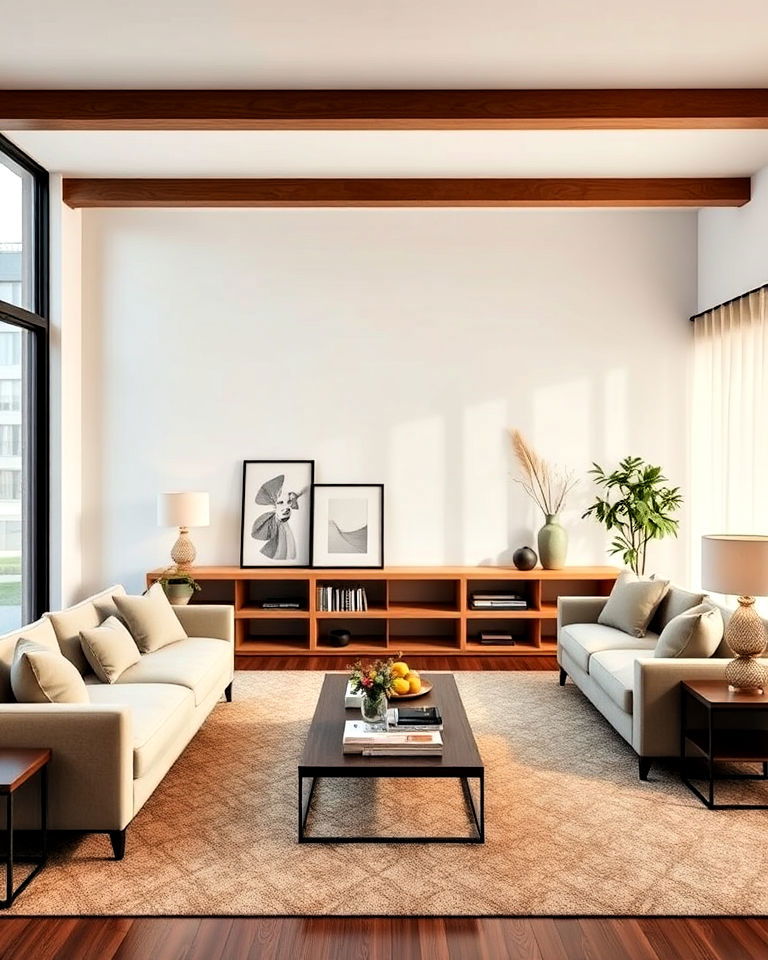
A long console table behind the sofa can add functionality and style to a lengthy living room. This piece of furniture provides a surface for lamps, books, or decorative objects, enhancing the cozy feel of the seating area. It also helps create a clear boundary between the sofa and other parts of the room, adding a sense of structure. A console table with open shelves can also serve as a display space, contributing to the room's decor.
8. Use Large Art Pieces to Anchor the Space
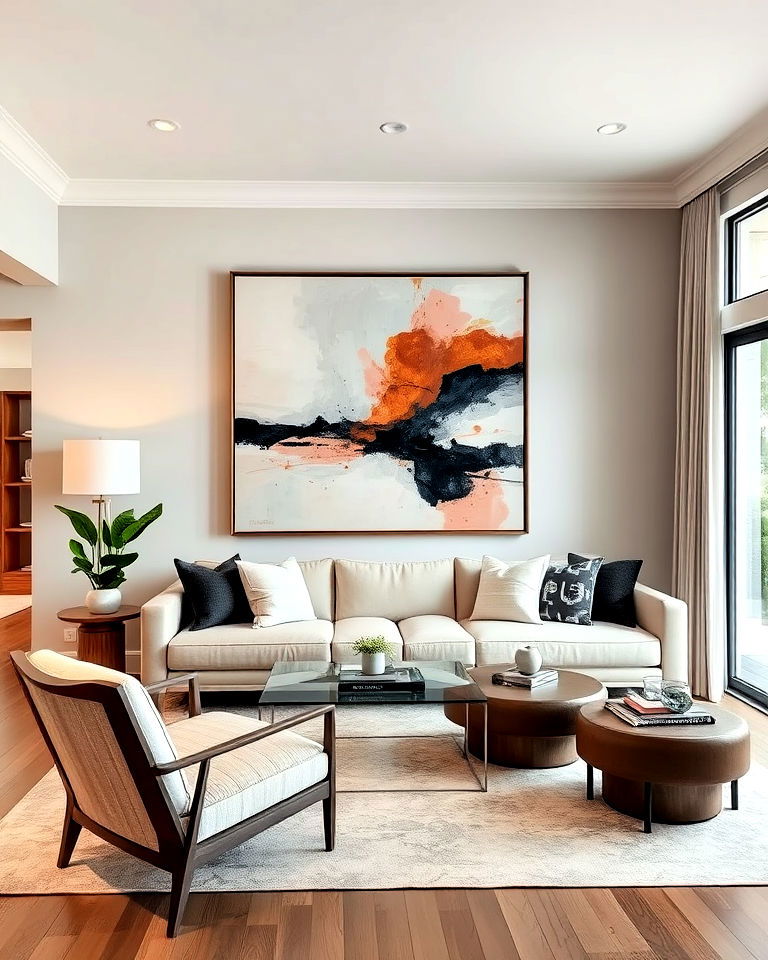
Discover clever narrow living room ideas that make the most of a slim space. Large art pieces can help anchor different areas of a long living room, adding focus and style. Choose oversized paintings or framed prints that draw the eye to specific sections, such as above a sofa or a reading chair. These pieces create focal points that make the space feel balanced and thoughtfully designed. Bold artwork can also add personality, helping to tie together various zones within the room.
9. Opt for Sectional Sofas
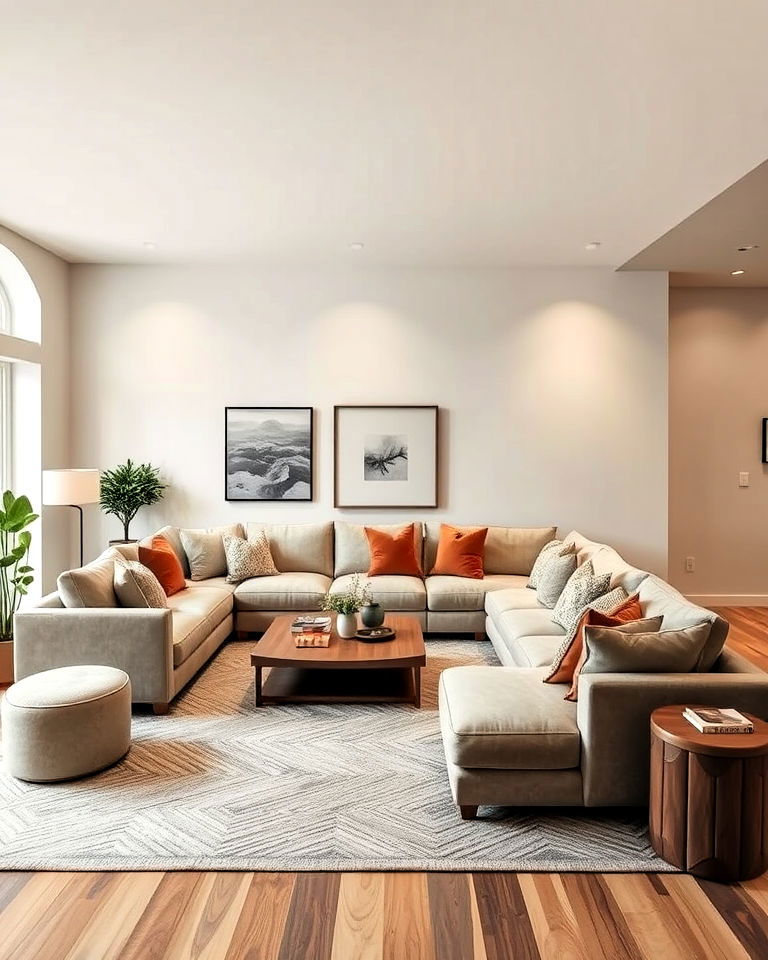
Sectional sofas are perfect for long living rooms as they can be configured to suit the shape of the space, complementing various living room couch ideas. L-shaped or U-shaped sectionals can create a cozy corner, providing ample seating while helping to define the area. Their size and versatility make them ideal for creating a central gathering spot in an otherwise expansive room. A sectional also prevents the need for additional chairs, keeping the space uncluttered.
10. Use Mirrors to Reflect Light
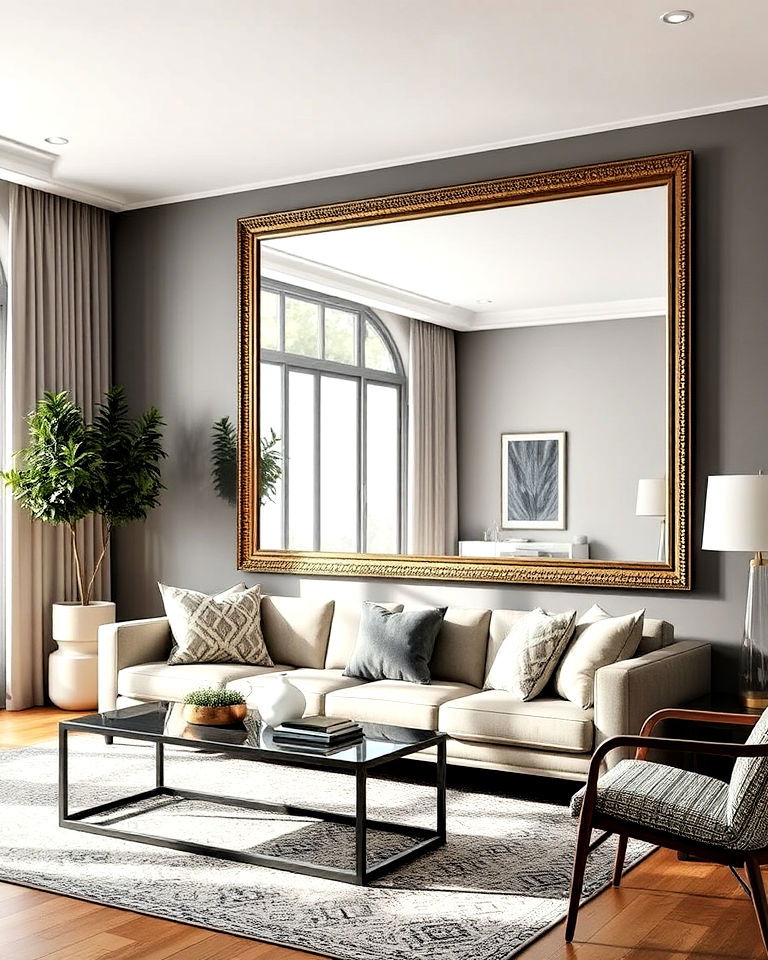
Mirrors can make a long living room feel brighter and more spacious by reflecting natural light. Place a large mirror on one of the longer walls to create the illusion of depth and openness. Mirrors also add a decorative element that enhances the room's design without taking up physical space. Choose a mirror with a unique frame to add a touch of style, making it a focal point that doubles as a functional piece.
11. Add Tall Houseplants for Vertical Interest
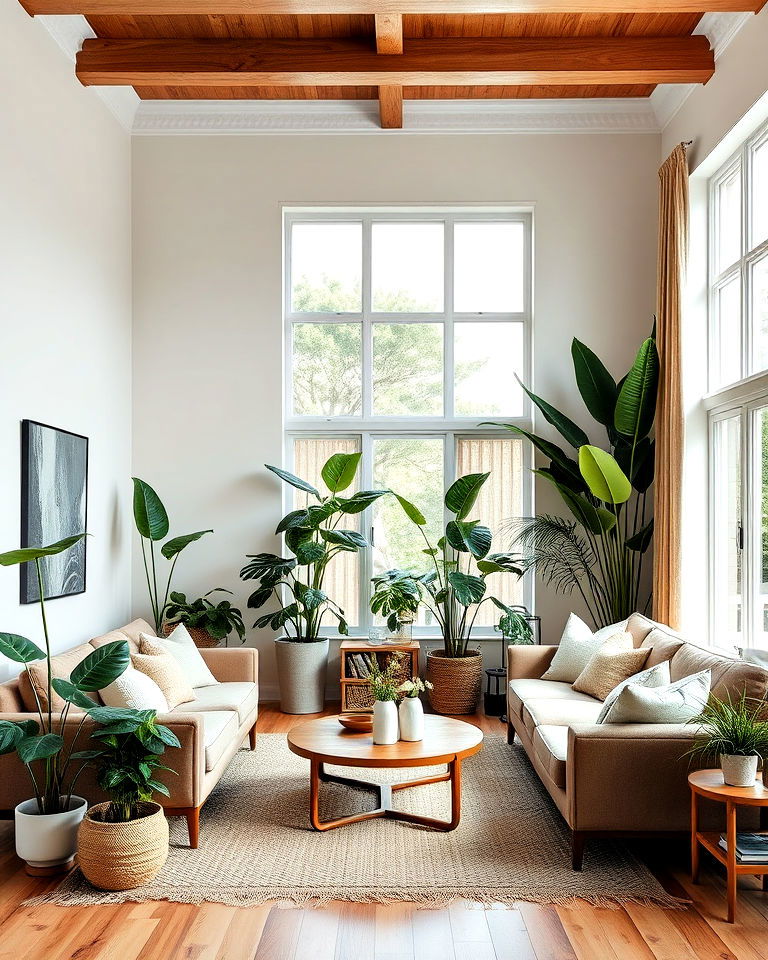
Tall houseplants can break up the visual length of a long living room, adding vertical interest and a touch of greenery, similar to the effect of incorporating a living room with beams. Place plants like fiddle leaf figs or palms near corners or between seating areas to create a natural partition. Plants bring in a fresh, organic feel, softening the space while making it feel more inviting. This approach works especially well when combined with natural materials like wooden furniture or woven rugs.
12. Create a Reading Nook
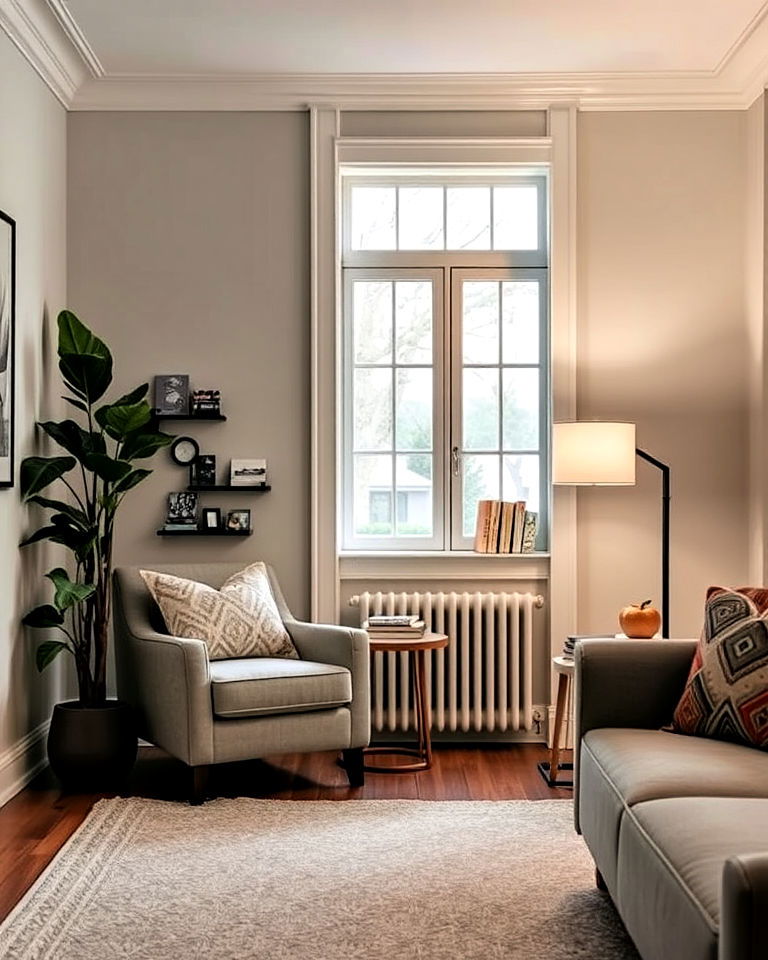
A reading nook is a great way to make use of extra space in a long living room, and living room nook ideas can provide inspiration for designing the perfect spot. Position a comfortable armchair, a small side table, and a reading lamp in a corner or by a window to carve out a cozy spot. This dedicated space adds purpose to the room and creates a sense of retreat. It also provides an additional seating area without disrupting the flow of the main living space.
13. Hang Drapes to Frame Zones
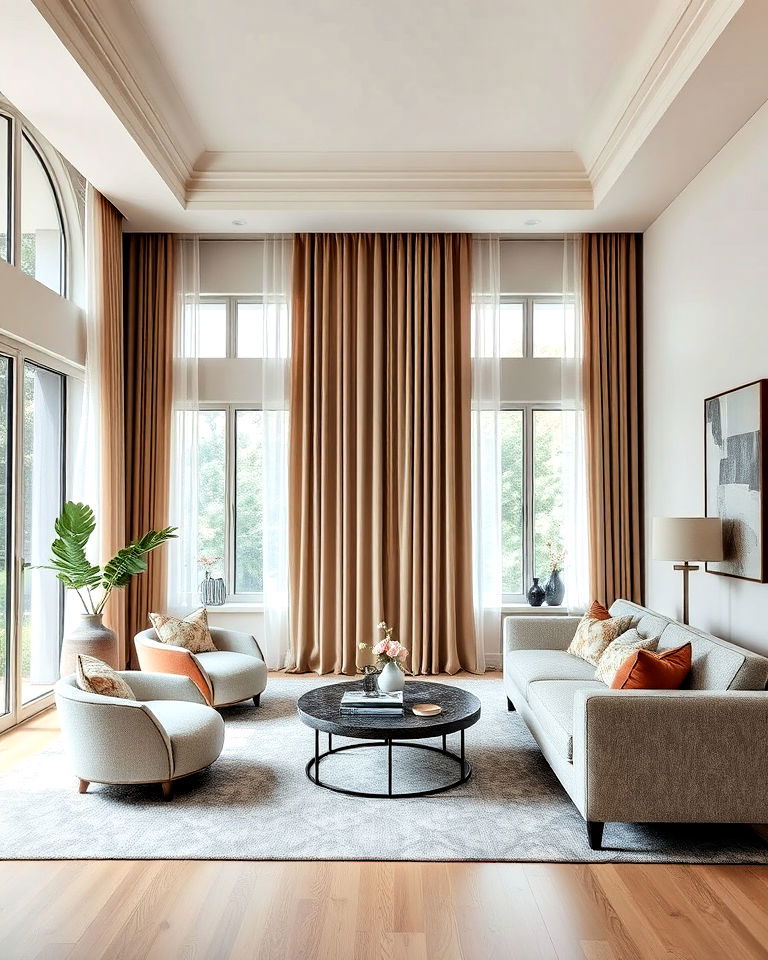
Hanging drapes or curtains can help visually frame different zones in a long living room. Choose drapes that match your decor and hang them at various points along the room's length, such as behind a sofa or around a window seat. This creates a sense of separation without using solid walls, adding softness and a touch of luxury. Light, sheer fabrics can keep the space airy, while heavier materials offer more definition.
14. Use Statement Lighting for Focus
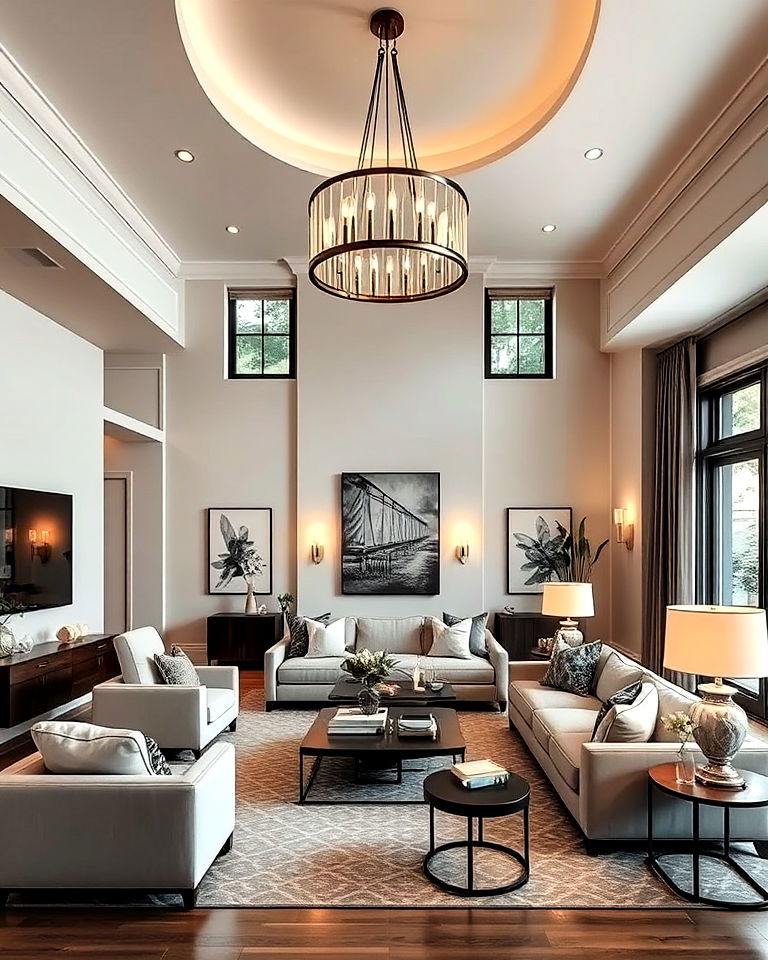
Find the perfect long narrow living room layout to enhance flow and functionality. Statement lighting like chandeliers or large pendant lights can help define specific areas within a long living room, and living room ceiling lighting ideas can offer additional inspiration. Hang a bold fixture above the main seating area to draw attention to this space, making it feel like a separate zone. Layer in smaller lamps or wall sconces throughout the room to ensure balanced lighting. The right lighting not only enhances functionality but also adds a touch of style, making the room feel more intimate and cohesive.
15. Incorporate a Fireplace as a Central Feature
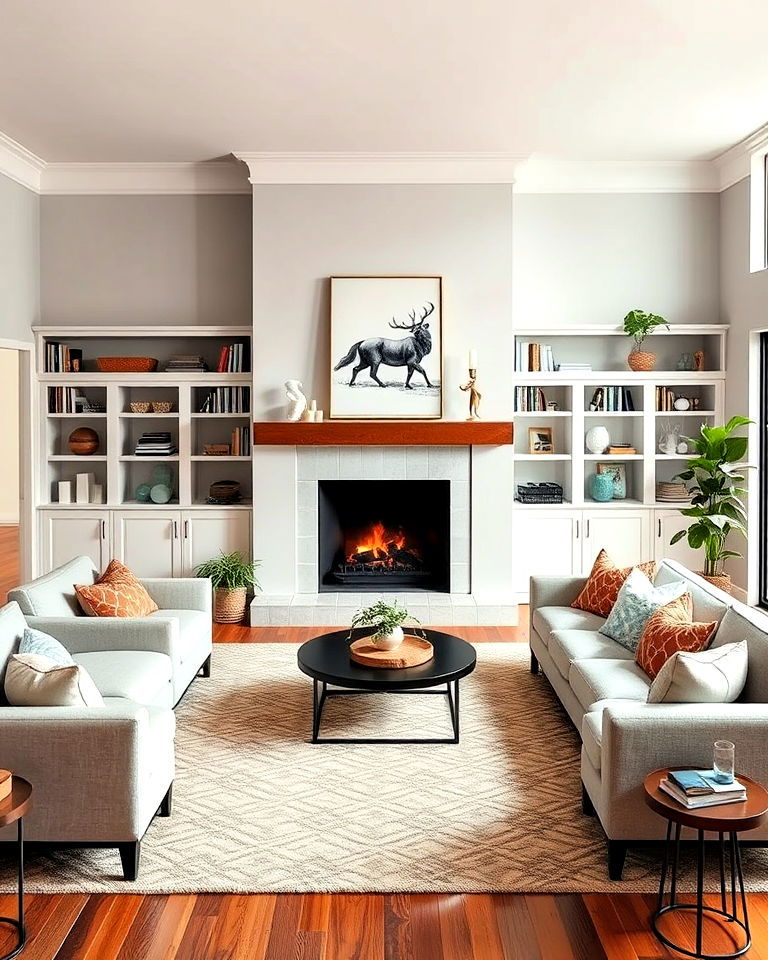
If your long living room includes a fireplace, use it as a natural centerpiece around which to arrange furniture, and fireplace accent wall ideas can help enhance its appeal. This helps create a focal point that grounds the room, making it feel cozy and inviting despite its length. Position seating around the fireplace to draw people in, and use the surrounding wall space for shelves or artwork. This setup makes the fireplace a gathering spot, bringing balance to the room's proportions.
16. Place Accent Chairs to Create Balance
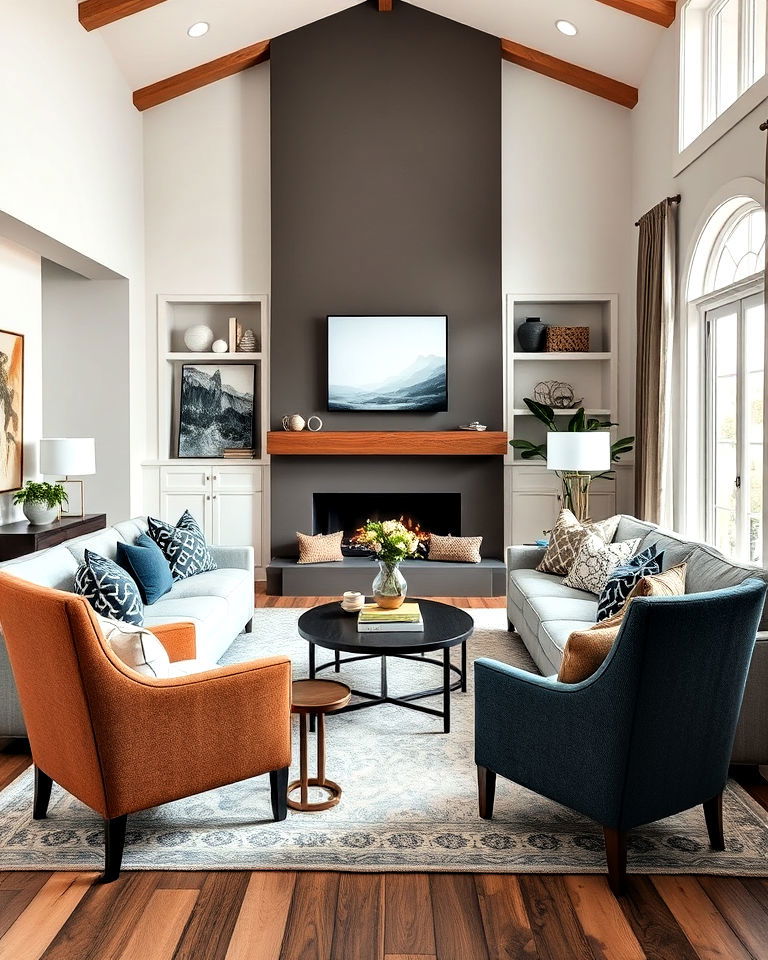
Accent chairs can help create visual balance in a long living room by filling empty corners and creating symmetry. Use a pair of matching chairs on either side of a sofa or place them opposite a sectional to form a balanced seating arrangement. Accent chairs add style and extra seating without overwhelming the space. Choose designs that contrast with the sofa to add a pop of color or texture, enriching the room's aesthetic.
17. Install Wall-Mounted Shelving for Storage
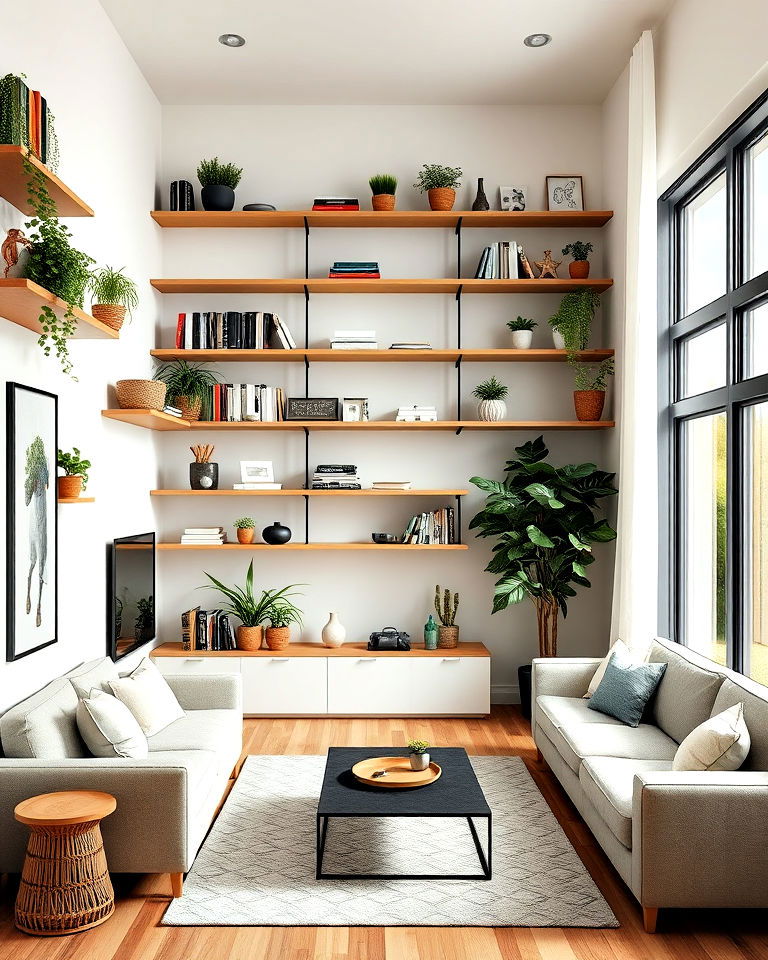
Wall-mounted shelving is an excellent way to maximize vertical space in a long living room, keeping the floor area free, and living room toy storage ideas can help organize the space effectively. Use shelves to display books, plants, or decorative items, adding personality to the room while maintaining a clean look. This is particularly useful for creating a reading or hobby corner without taking up extra space. Shelving can also be installed along the length of the room, creating continuity and tying different zones together.
18. Use Light and Dark Color Contrasts
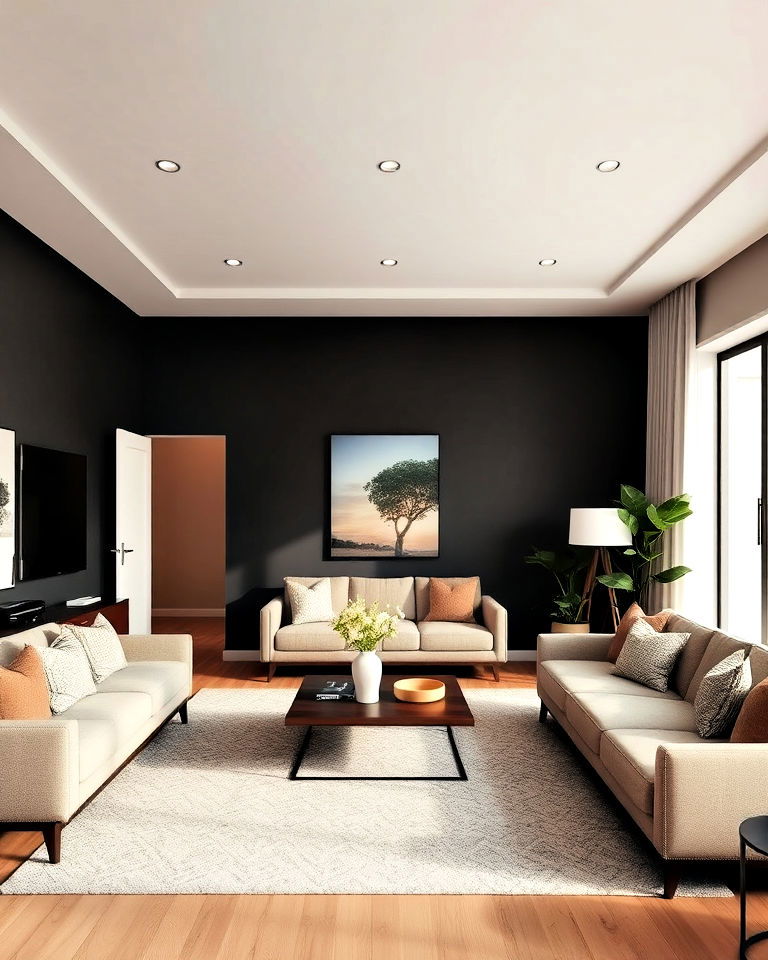
Using light and dark color contrasts can help break up the expanse of a long living room, making each area feel unique, and living room paint colors can guide you in choosing the perfect palette. Paint one end of the room in a darker shade to create a cozy atmosphere, while keeping the rest lighter for an open feel. This contrast can be applied to furniture, accent walls, or decor items, adding depth and interest. The interplay of light and dark tones creates a dynamic and visually appealing space.
19. Add a Bench or Low Cabinet Along One Wall
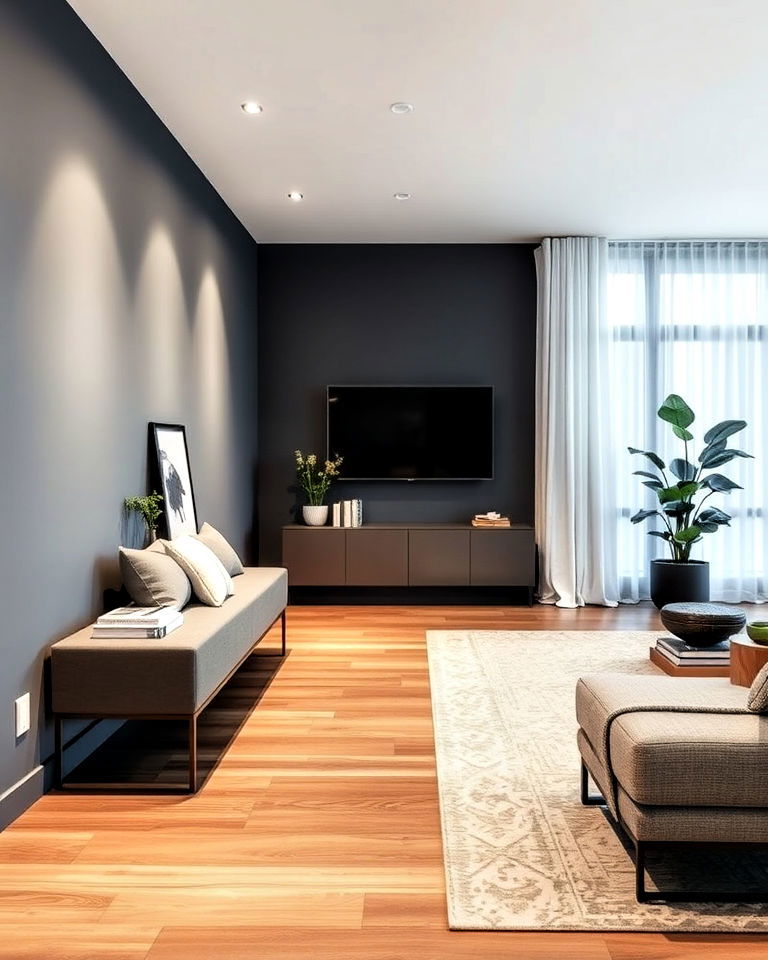
Transform your area with a stylish rectangular long narrow living room layout that feels open and cohesive. A bench or low cabinet placed along one wall can serve as a functional element while breaking up the room's length. Use it to display decor, store books, or as extra seating when needed. A sleek bench or cabinet keeps the space open while providing a useful surface for everyday items. This solution is perfect for maintaining a minimalist look while adding practical storage or display space in a long living room.
20. Decorate with Horizontal Stripes
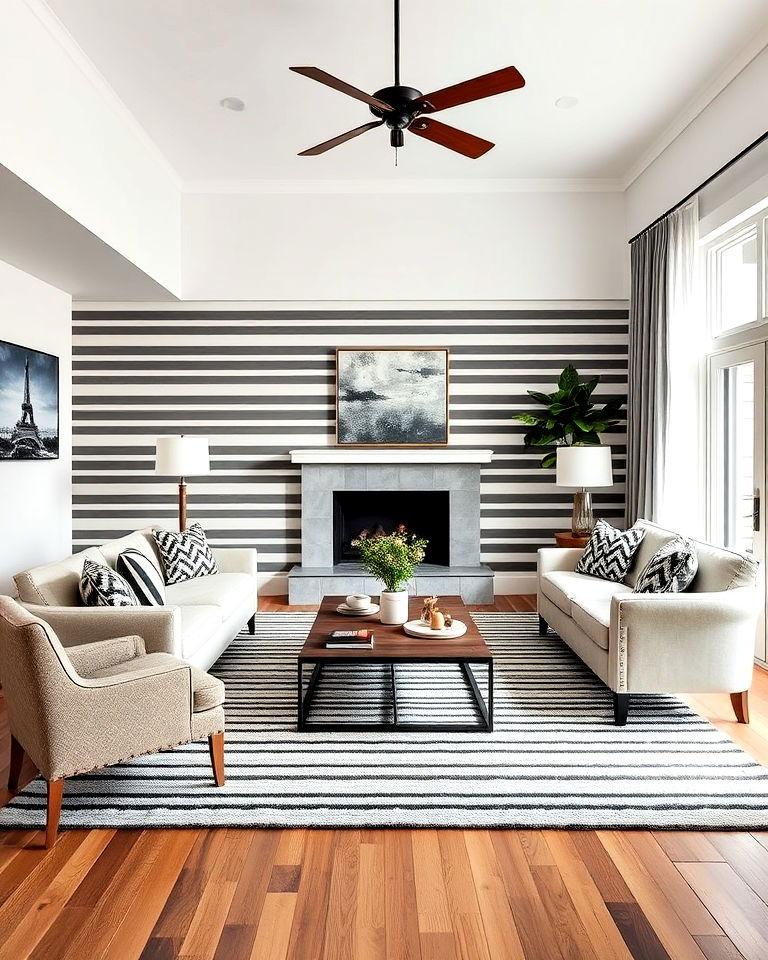
Horizontal stripes, whether on walls, rugs, or furniture, can visually shorten a long living room by drawing the eye across rather than down the length. Use striped wallpaper on an accent wall or choose a striped area rug to create a sense of width. This design trick helps balance the room's proportions and adds a dynamic element to the decor. Stripes can be subtle or bold, depending on the style you want to achieve, offering a versatile way to enhance the space.
Conclusion:
Transforming a long living room is all about creating balance and defining different zones. Utilizing furniture groupings, strategic lighting, and accent pieces can make the space feel more inviting and functional. Incorporating elements like area rugs, sectional sofas, and built-in shelving can add depth and character while maintaining a sense of flow. Whether you're aiming for cozy nooks or open spaces, these design tips ensure that your long living room becomes a stylish, well-planned area that suits your lifestyle.
Key Points:
- Zoning for Functionality: Divide the long living room into multiple functional zones using rugs, furniture groupings, or bookshelves to create distinct areas while maintaining flow.
- Strategic Furniture Placement: Use sectional sofas, daybeds, and accent chairs to define spaces, create walkways, and enhance the room's comfort without overwhelming the layout.
- Visual Tricks for Balance: Apply paint contrasts, mirrors, and horizontal stripes to balance proportions, adding depth and making the room feel more cohesive.
- Incorporate Vertical Elements: Use tall plants, shelving, and statement lighting to break up horizontal lines, adding interest and warmth to the space.
- Emphasize Natural Light: Mirrors and light, airy drapes enhance natural light, creating a bright, open atmosphere that counters the room's elongated shape.
What to Do Next:
- Assess Your Room's Layout: Determine which areas could benefit from distinct zones or furniture arrangements to create better flow.
- Choose Key Furniture Pieces: Select multi-functional furniture like sectional sofas, console tables, or daybeds to maximize the space and improve comfort.
- Implement Design Tricks: Use mirrors, accent paint, or rugs to define spaces and visually balance the room.
- Focus on Lighting: Incorporate both natural and artificial light to brighten the space and highlight different zones effectively.
- Decorate Thoughtfully: Add personal touches like artwork, plants, or accent chairs to create a space that feels inviting and uniquely yours.

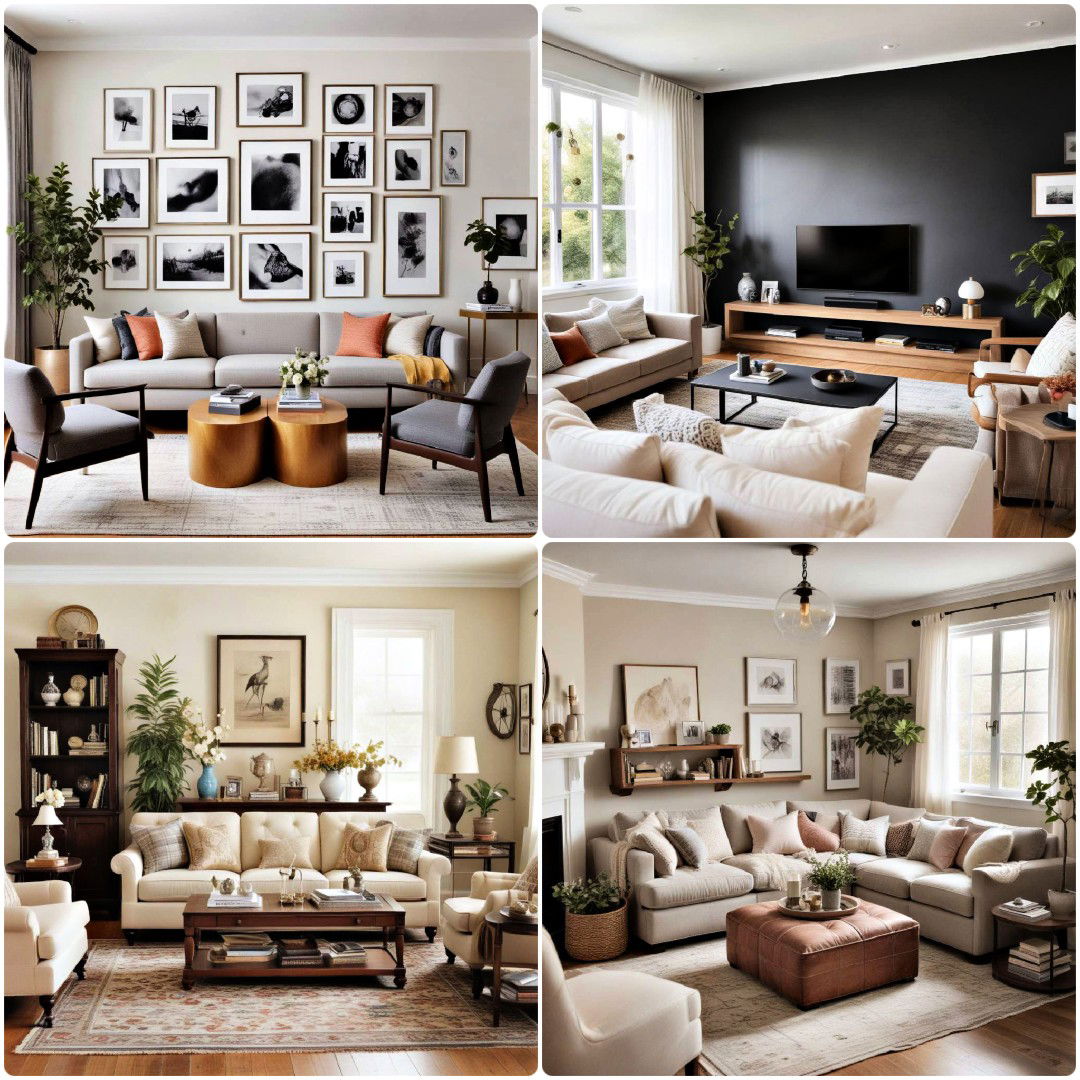
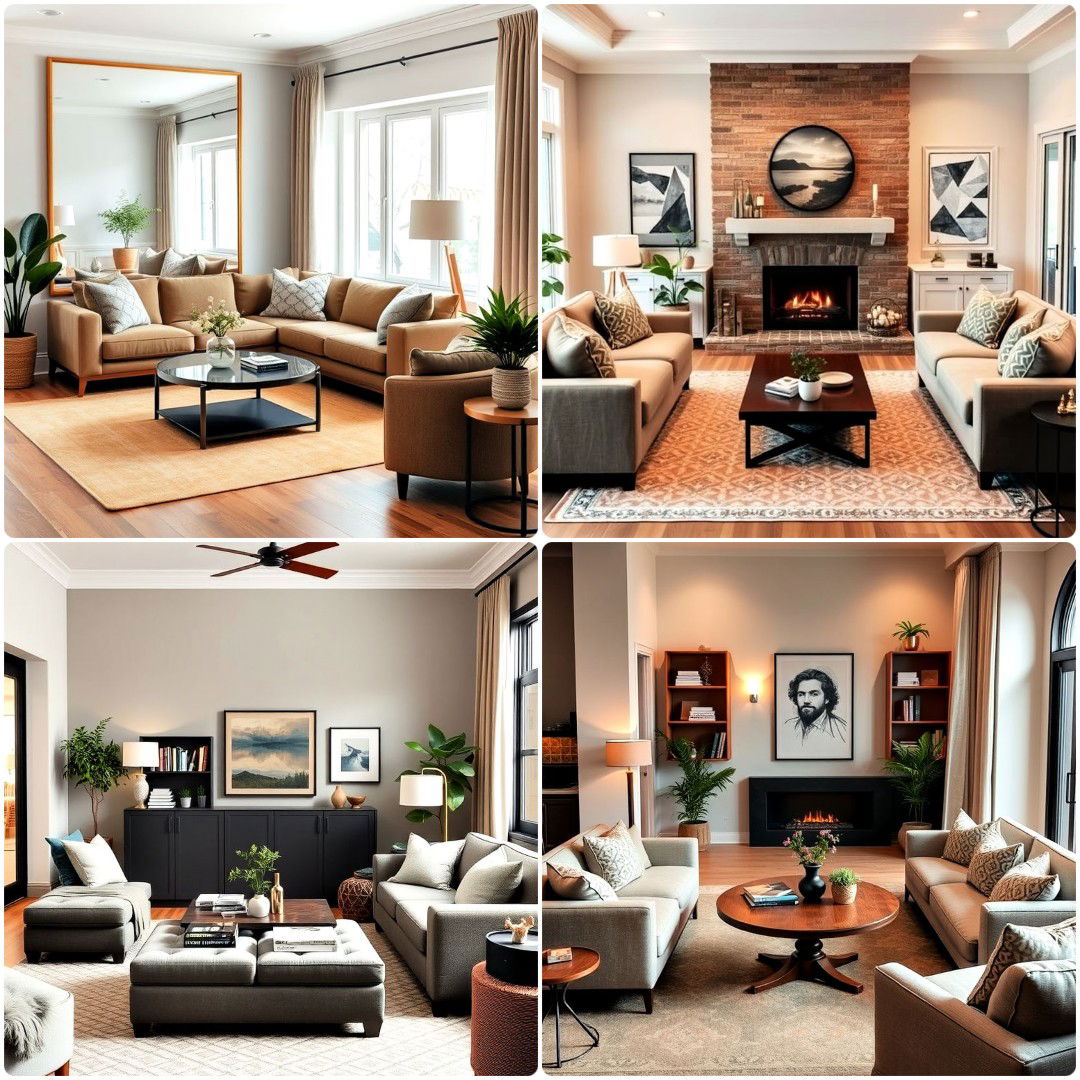

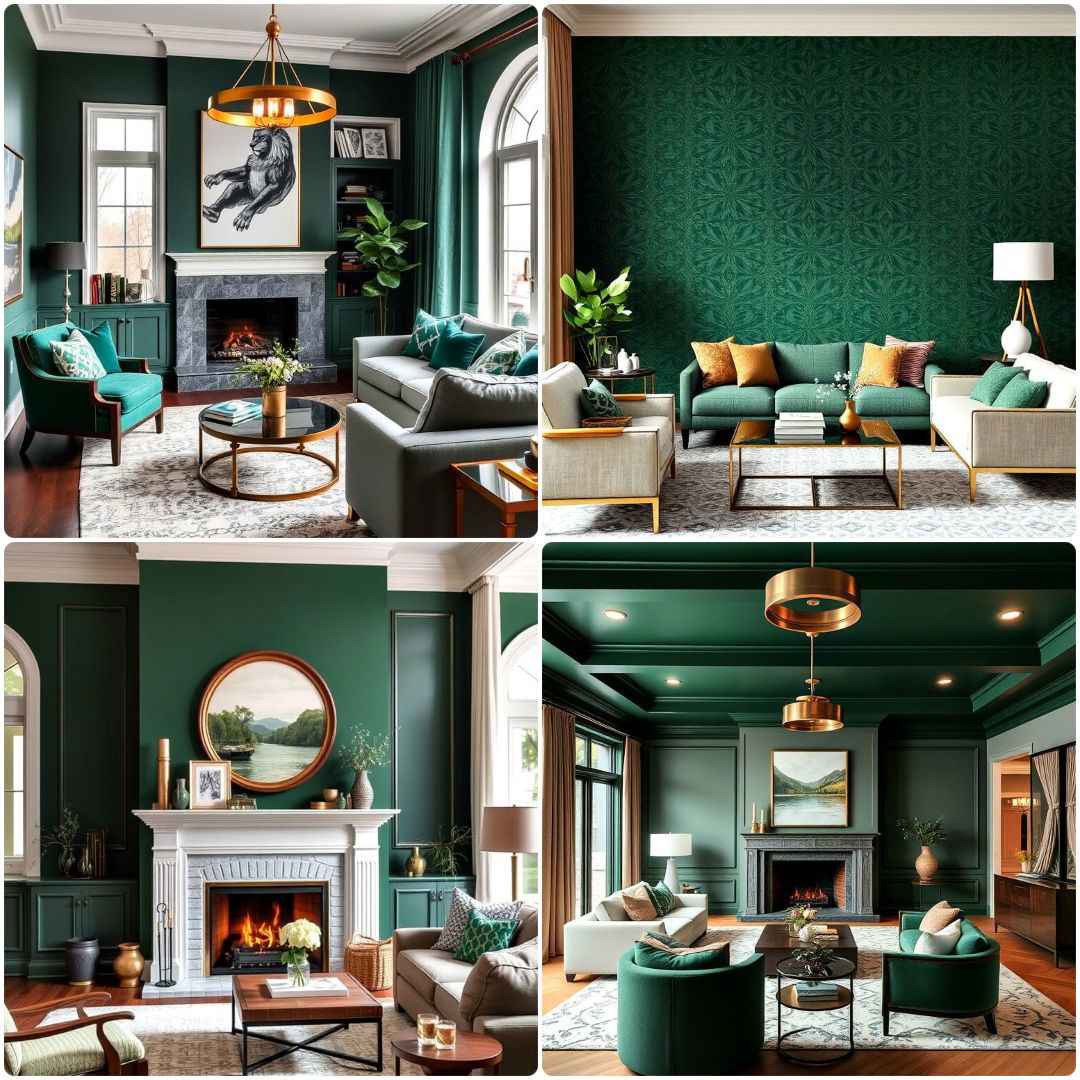
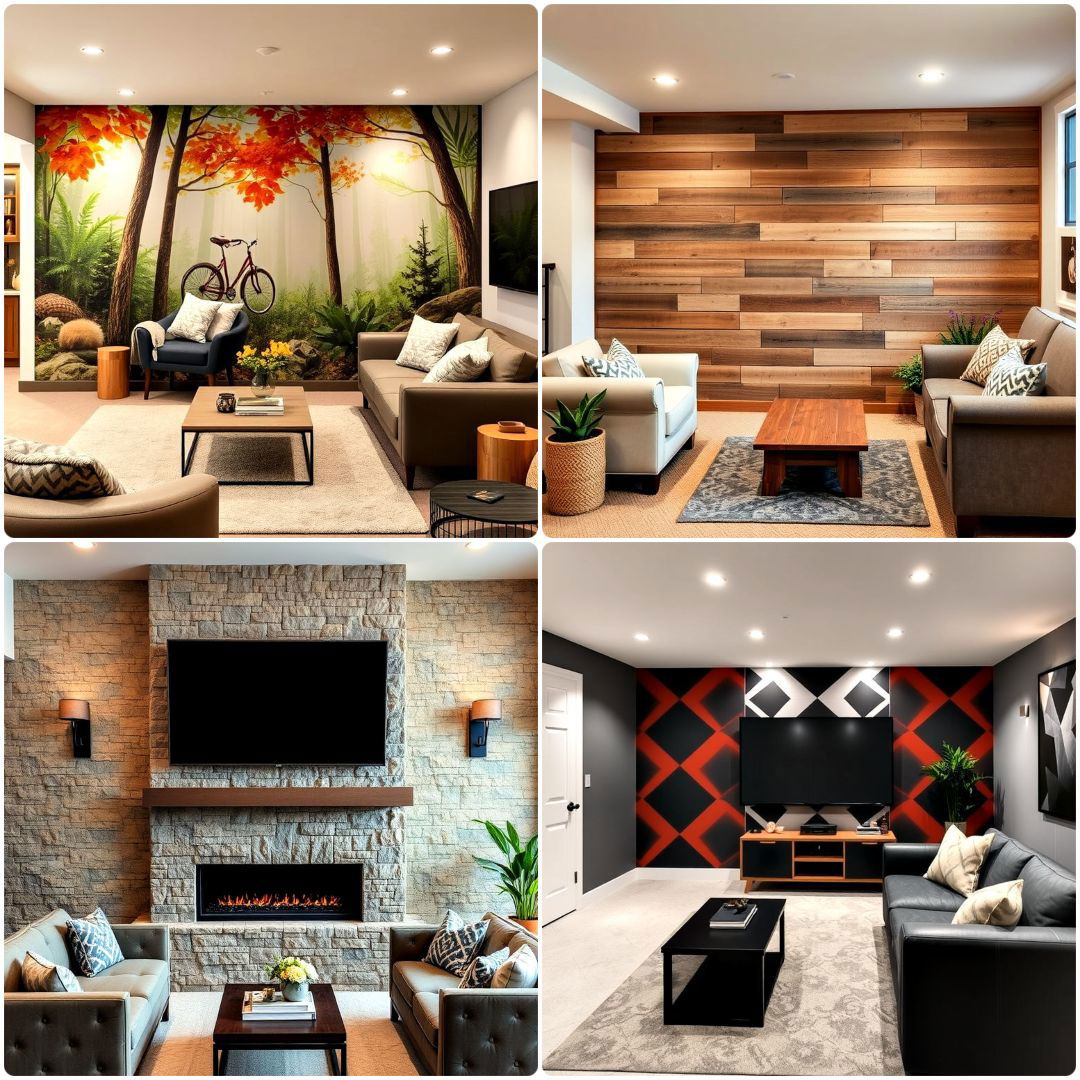

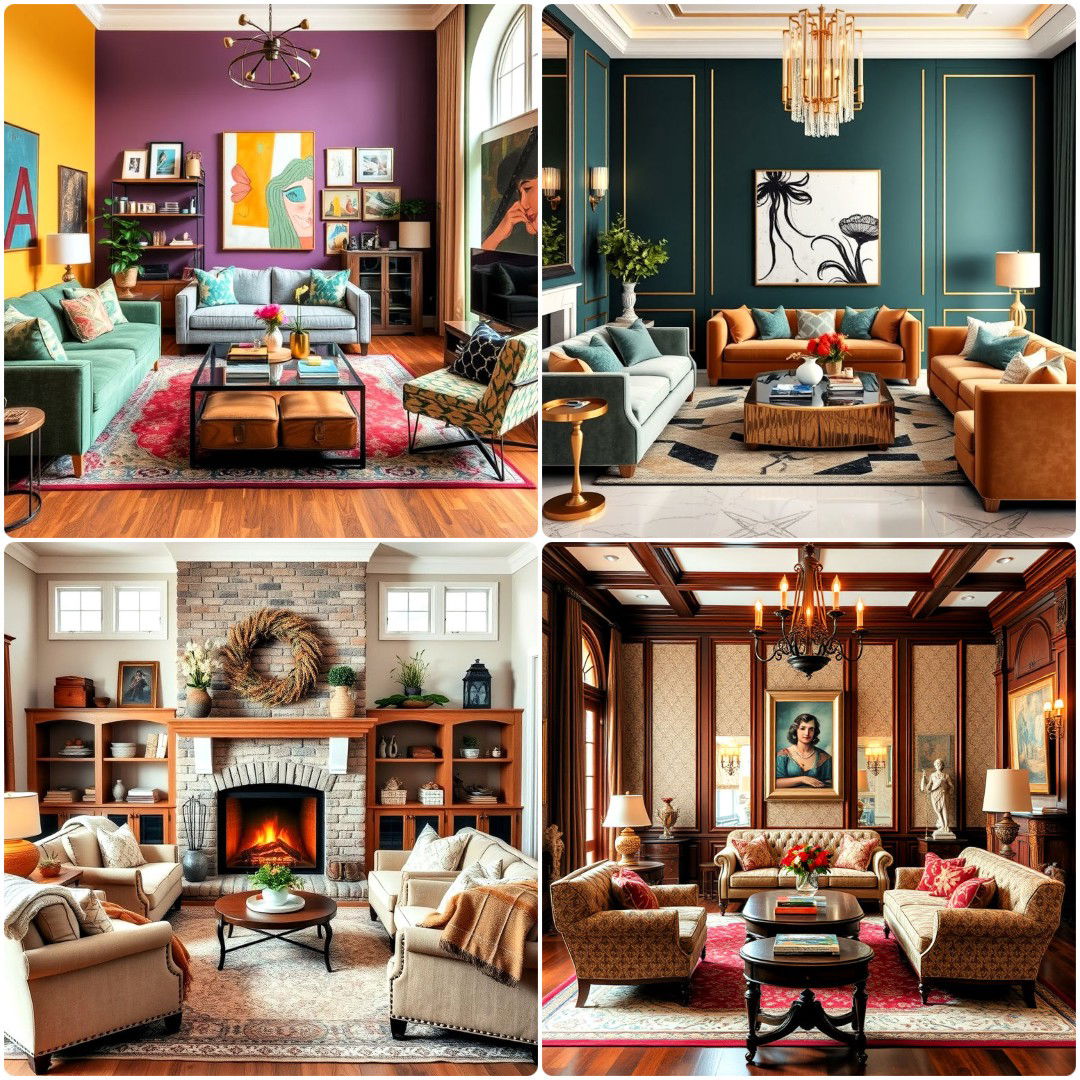
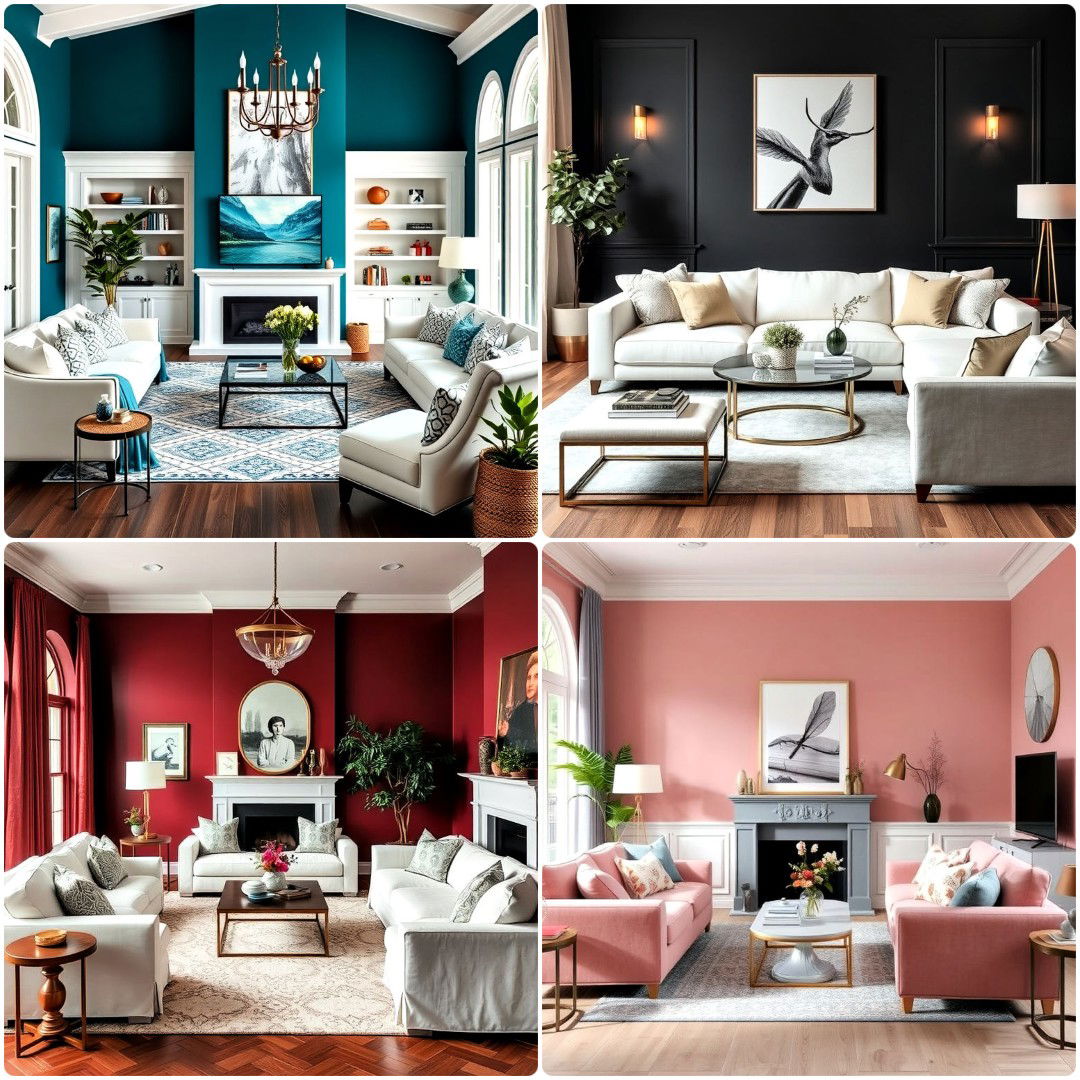
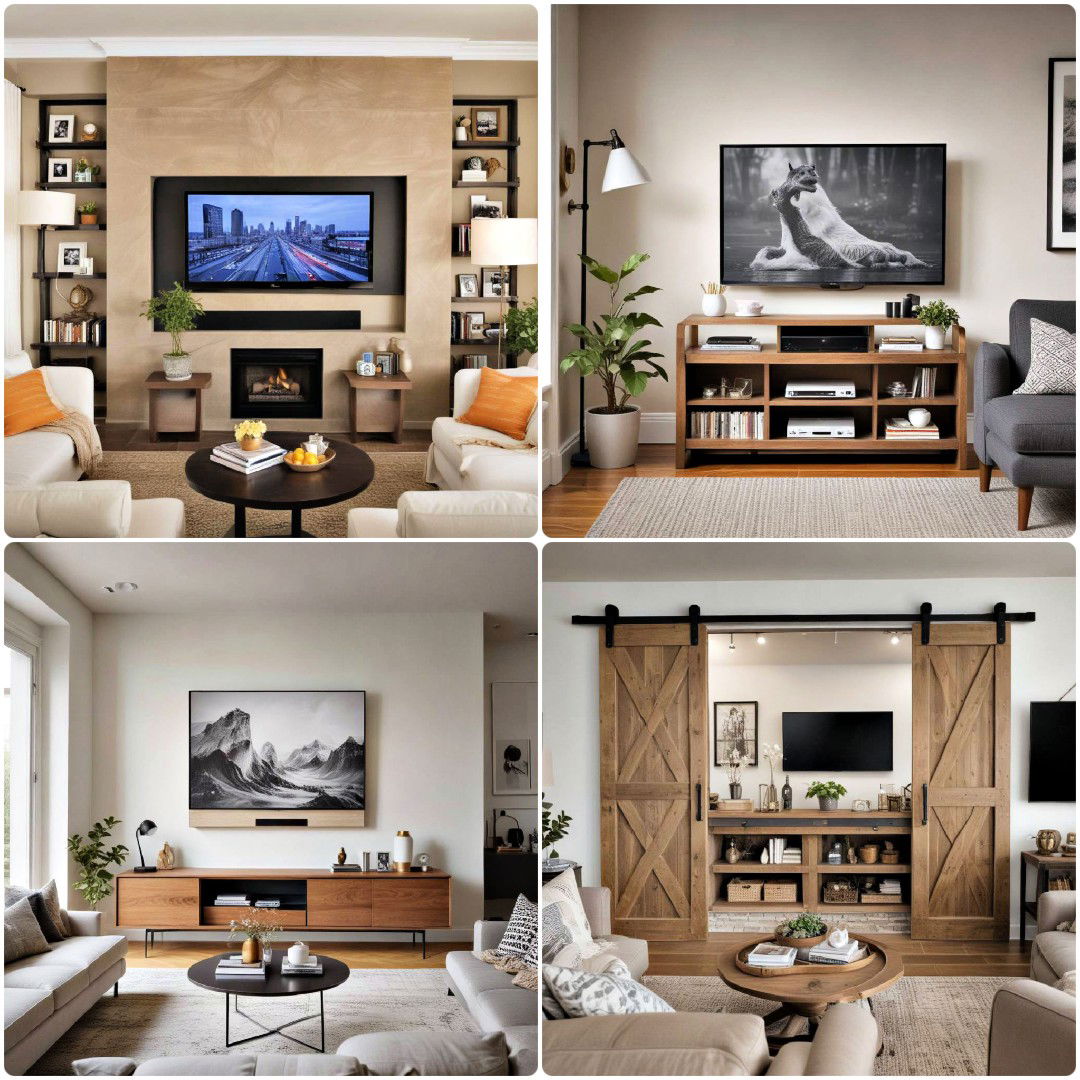
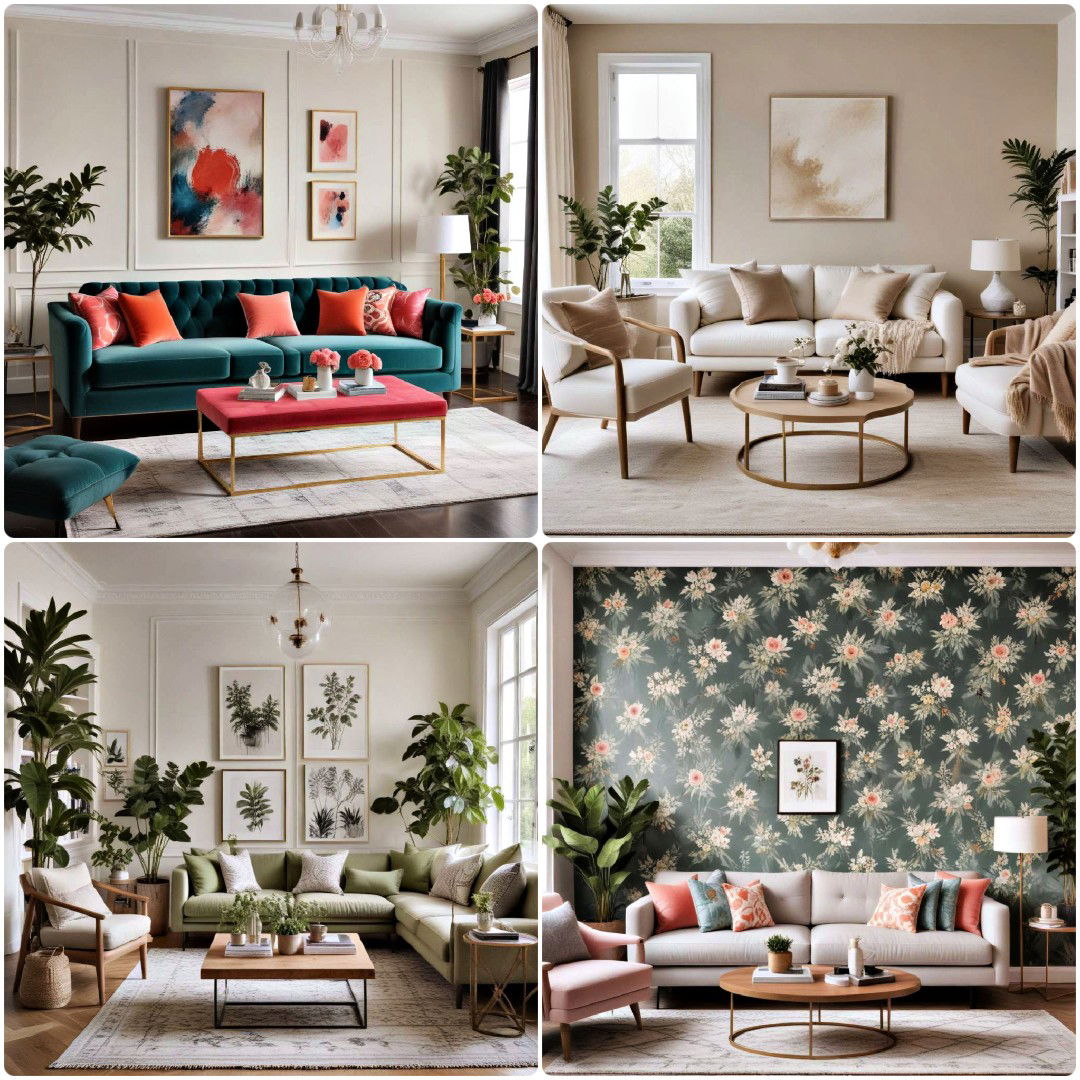
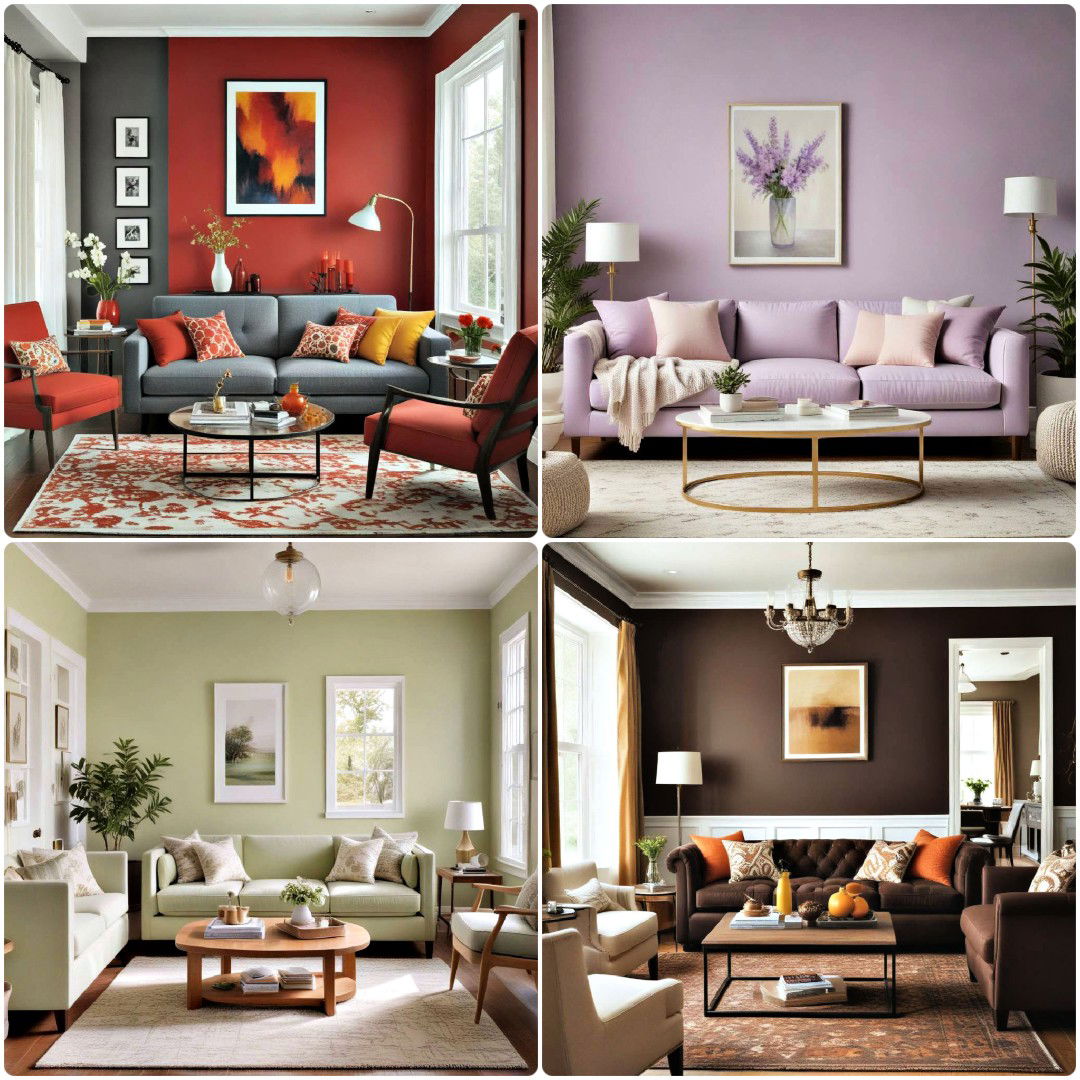
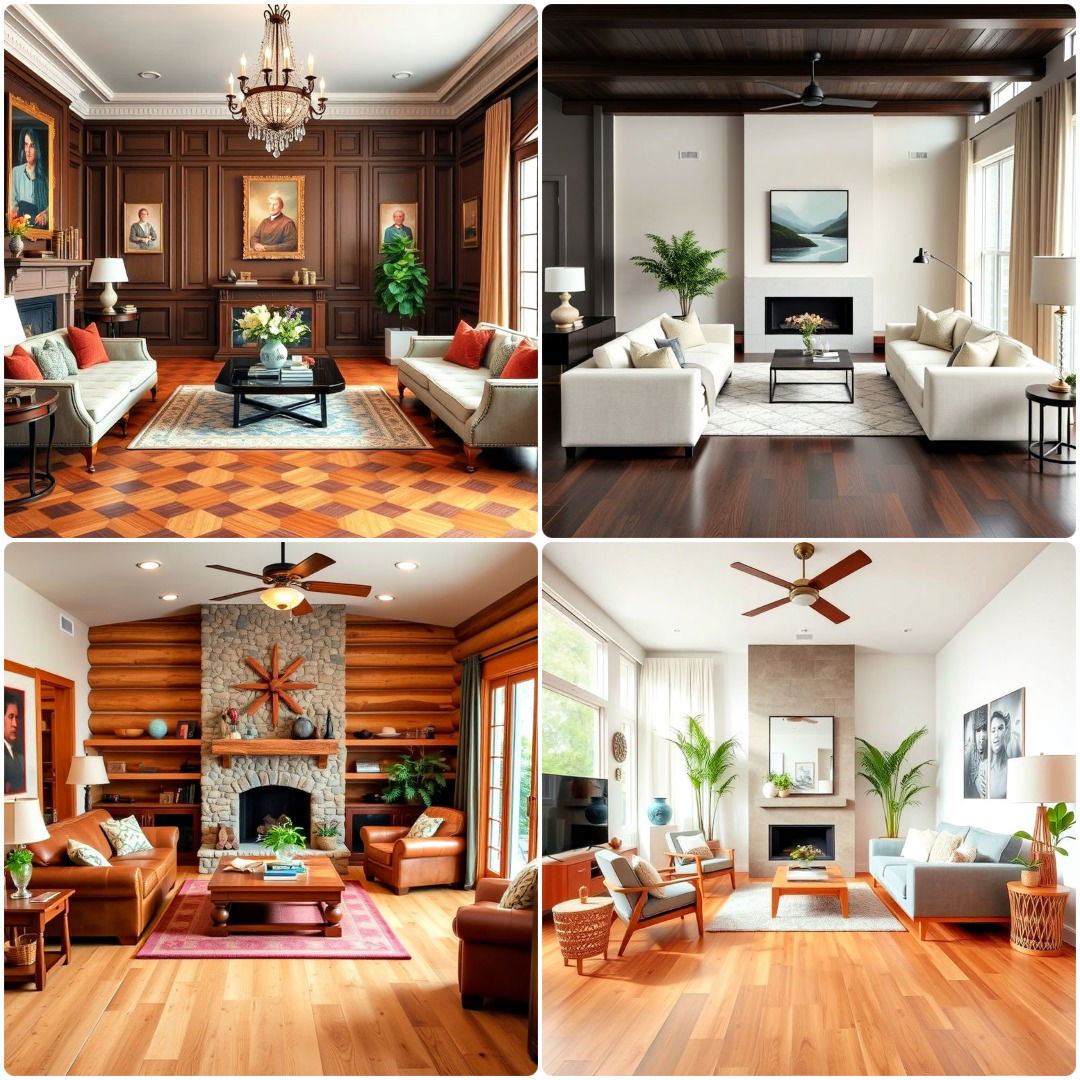
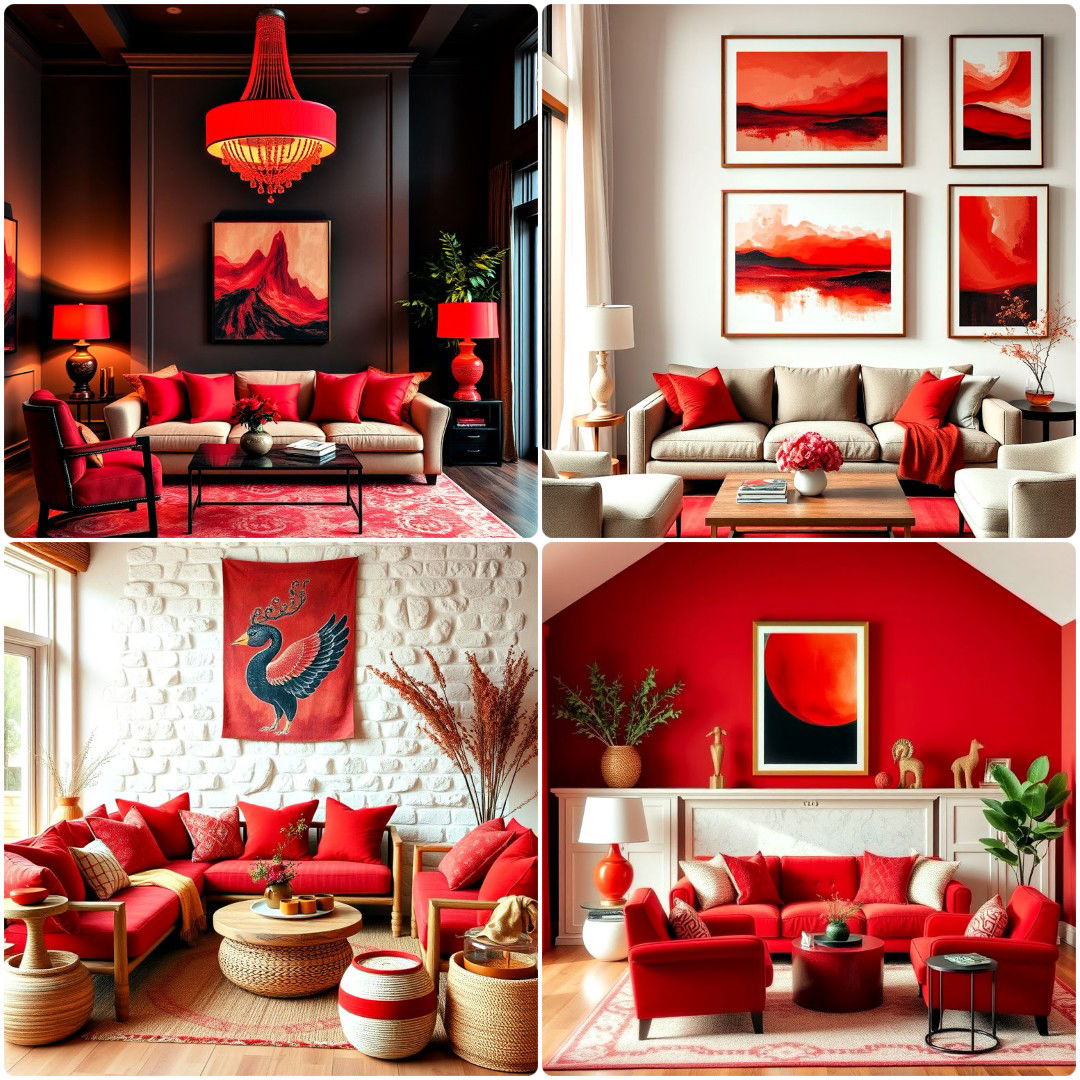
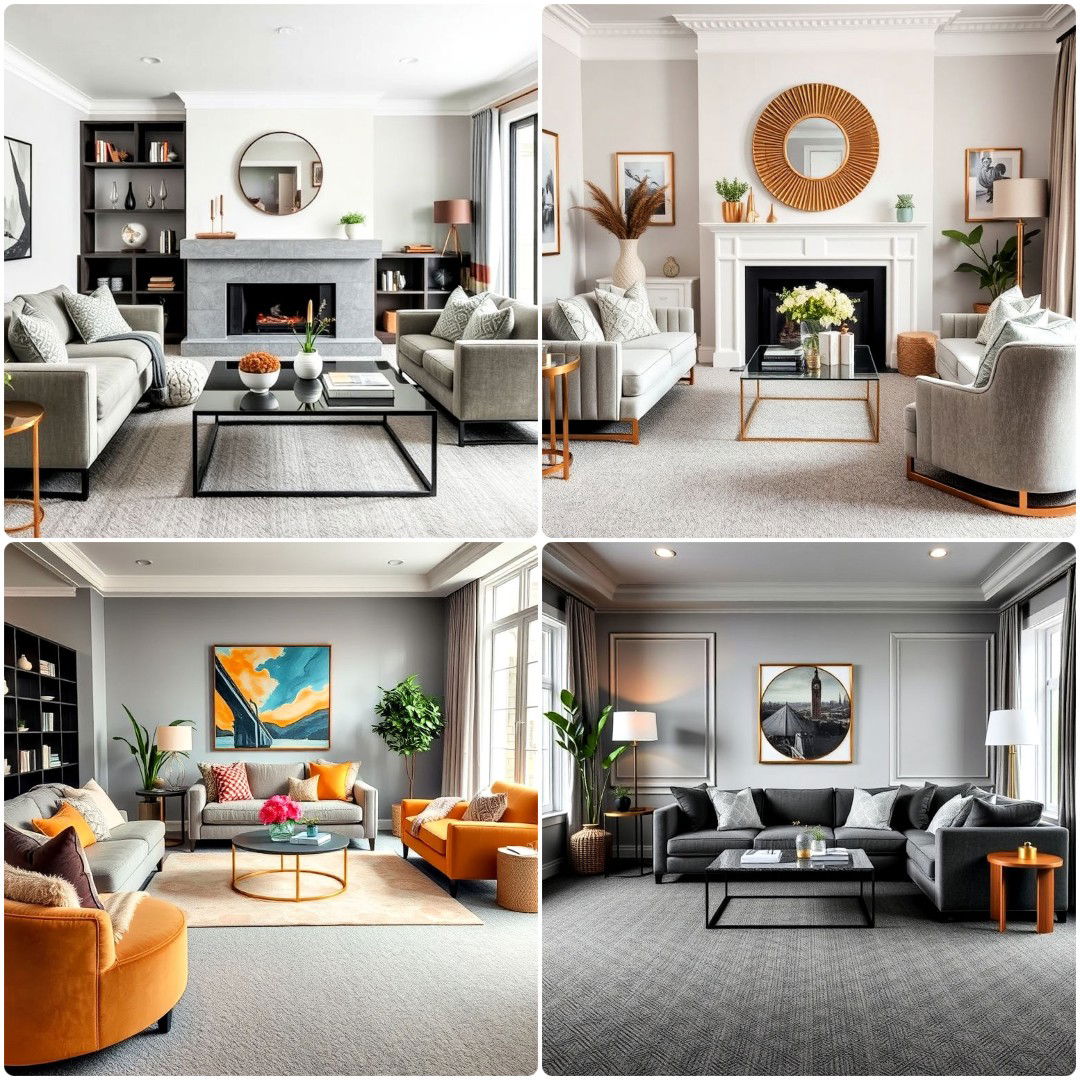
Leave a Reply